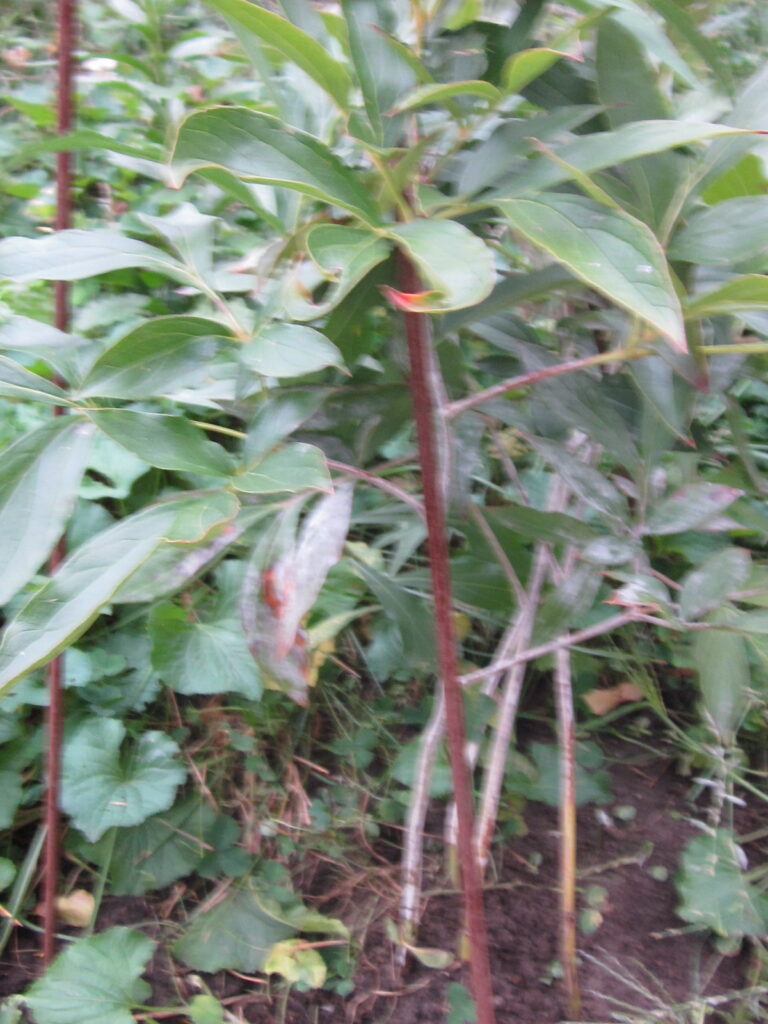
Last summer I transplanted a Peony bush, but it didn’t bloom this fall.
The attached photo shows the transplanted stalks as dried and white, under the metal tripod with reddish metal suports.
Should I just wait another season to see if it blooms, or try another transplant, since the previous location isn’t as fertile after the new neighbour planted flowers in place of a previous deck structure, making the adjacent beds less fertile, as the last 20 years.
Thank you for contacting the Toronto Master Gardeners.
Peonies prefer to be sited in a location that receives a minimum of 6 hours of sun per day in well-drained, slightly acidic soil (6.5 to 7.0 pH). If your peony is planted in heavy, clay soil, amending with compost will help with the drainage and provide much needed organic nutrients to your plant. This website lists the proper growing requirements for your peony.
It is difficult to tell from you photograph but the whitish stems could be a sign that you peony has powdery mildew. Powdery mildew is a fungal disease producing a light gray or whitish powder on the surface of leaves, young stems, and flowers. Powdery mildew usually occurs following warm days and cool nights often being seen in the fall and spring. The disease is considered more unsightly than harmful, however this disease can weaken plants. Good air circulation is a key factor in preventing your plant from becoming infected with powdery mildew. Moving the plant to a sunny spot, as too much shade seems to make the problem worse is also another key factor in preventing infection. Try to avoid overhead watering and do not handle the plant when the foliage is wet as this will spread the disease. Watering early in the day as opposed to at nights will allow the water to evaporate preventing the spread of the fungal spores. Remove and destroy infected leaves as they appear. Cut back diseased peonies to the ground and remove all debris from the site to curb powdery mildew the following year. Do not place the material in your compost, instead place it in your yard waste for city pick up. make sure to sterilize your pruners once finished to prevent spread of the spores. This website lists all possible peony diseases along with a description of the disease, their cause and how to properly manage the disease.
If you decide to transplant your peony to a new location the best time to dig up and/or divide peonies is mid September. Prior to lifting the plant, cut off the foliage close to the ground. Using a spade dig deeply all around the plants and under, then lift with as much of the root system as possible being careful not to damage the crown. Do not plant any deeper than the original planting depth. Place the plant back in the hole so the eyes are 1 to 2 inches below the soil surface. (Peonies planted deeper than 2 inches often fail to bloom satisfactorily.) Fill the hole with soil, firming the soil as you backfill, then water thoroughly. You may need to sprinkle some soil between the stems. Watering will remove any air pockets.
Hope this helps.

